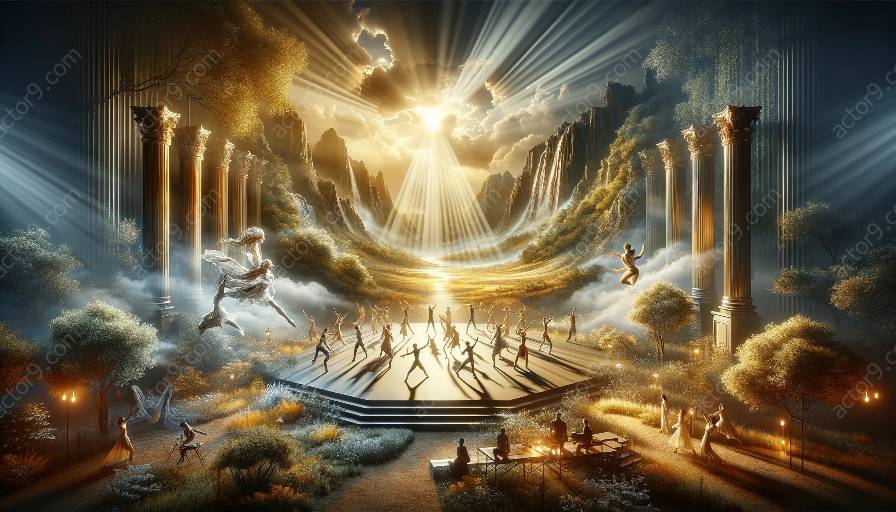Physical theatre, characterized by the use of movement, gestures, and expressions to convey a narrative, relies on a myriad of elements to create an immersive experience for the audience. One of the most crucial elements that contribute to the success of physical theatre performances is lighting. While traditional lighting techniques play a significant role, unconventional lighting techniques have gained traction for their ability to enhance the overall impact of physical theatre.
The Role of Lighting in Physical Theatre
Before delving into unconventional lighting techniques, it is essential to understand the fundamental role of lighting in physical theatre. Lighting serves as the visual language that complements the physical expressions of the performers, guiding the audience's perception and evoking emotional responses.
Effective lighting design in physical theatre goes beyond mere illumination; it creates atmospheres, accentuates movements, and manipulates the audience's focus. It has the power to transform the stage, shifting from an intimate setting to a grand spectacle within moments, thereby enriching the storytelling experience.
Unconventional Lighting Techniques
Unconventional lighting techniques depart from traditional methods to offer innovative ways of illuminating physical theatre performances. These techniques challenge the norms and push boundaries, contributing to the creation of visually striking and immersive theatrical experiences.
1. Projection Mapping
Projection mapping involves using specialized software and equipment to project images and videos onto three-dimensional objects, such as set pieces or performers' bodies. In physical theatre, this technique can bring static set pieces to life, create illusions of movement, and transform the entire stage into a dynamic canvas for storytelling.
2. Interactive Lighting
Interactive lighting technologies enable performers to control or trigger light cues through their movements or interactions with the set. This interactive element adds a layer of dynamism and spontaneity to physical theatre performances, blurring the lines between the performers, the stage, and the lighting design.
3. Light Sculptures
Light sculptures involve the use of unconventional materials and structures to create unique lighting fixtures that interact with the performers and the stage elements. These sculptural lighting pieces become an integral part of the performance, shaping the visual landscape and adding depth to the narrative.
Implications of Unconventional Lighting Techniques
The adoption of unconventional lighting techniques in physical theatre brings forth several implications that enrich the overall theatrical experience:
1. Enhancing Visual Storytelling
Unconventional lighting techniques provide innovative ways to express the narrative visually, transcending the limitations of traditional lighting design. These techniques offer new avenues for directors and designers to communicate complex emotions and ideas through light.
2. Engaging Audience Imagination
By incorporating unconventional lighting techniques, physical theatre invites audiences to actively engage their imagination and perception. The dynamic interplay between unconventional lighting and movement-based storytelling stimulates a sense of wonder and immersion among spectators.
3. Fostering Artistic Experimentation
Unconventional lighting techniques encourage artistic experimentation and collaboration between lighting designers, directors, and performers. This exploration of non-traditional methods nurtures a spirit of creativity and innovation, leading to groundbreaking visual experiences in physical theatre.
4. Pushing Boundaries of Stagecraft
Embracing unconventional lighting techniques pushes the boundaries of stagecraft, expanding the possibilities of what can be achieved in physical theatre productions. It paves the way for the integration of technology and artistry, redefining the visual landscape of performances.
Conclusion
Unconventional lighting techniques constitute a transformative force in physical theatre, redefining the way visual narratives are conveyed and experienced. They open new dimensions of creativity and expression, elevating the art form and captivating audiences with their mesmerizing interplay of light and movement.




































